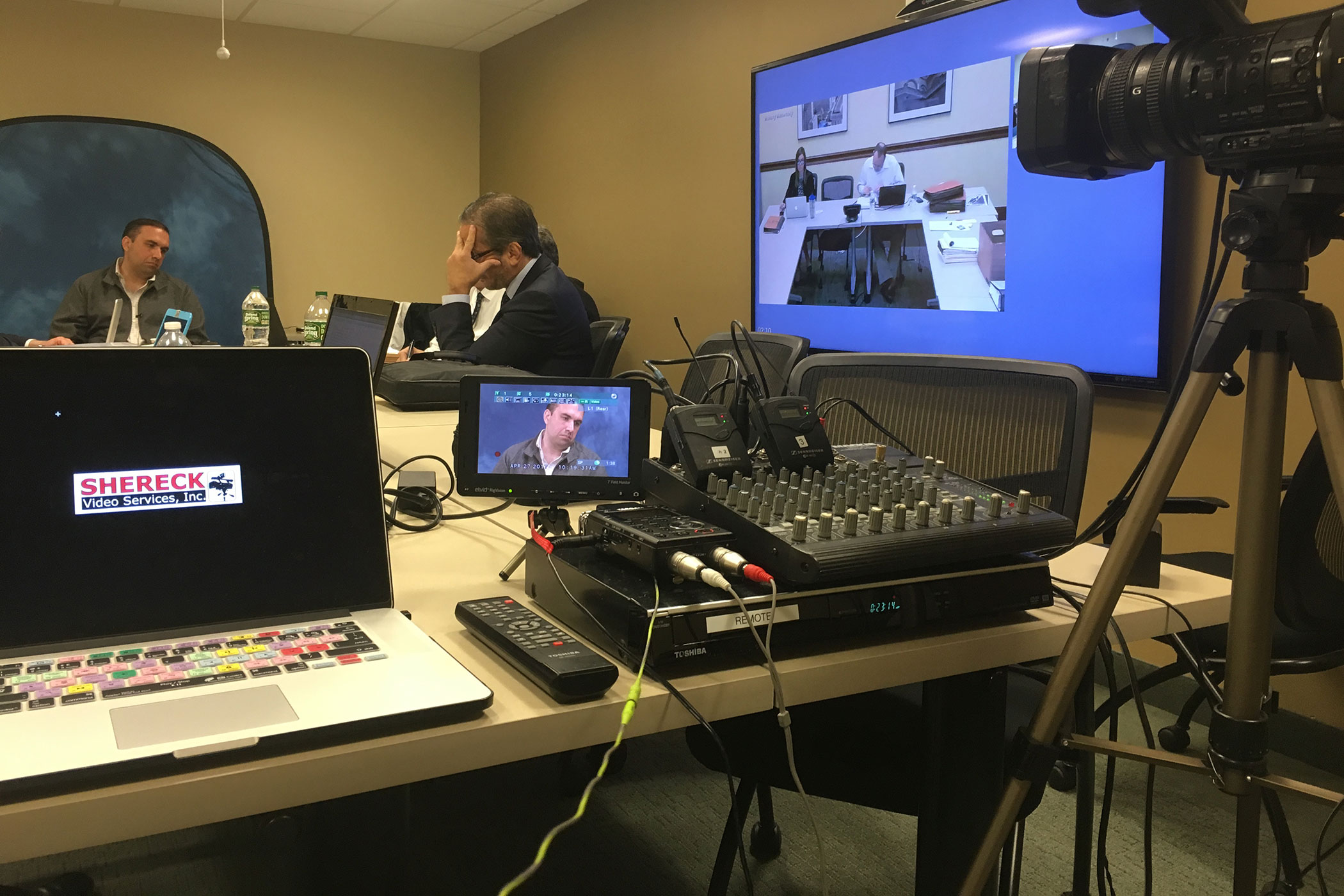The Ultimate Overview to Legal Videography for Lawyer and Legal Teams
The Ultimate Overview to Legal Videography for Lawyer and Legal Teams
Blog Article
Looking Into the Mechanisms of Lawful Videography: Unveiling Its Operation in Shielding Genuine Aesthetic Testament for Judicial Proceedings
In the world of judicial proceedings, the role of lawful videography stands as a cornerstone in maintaining and offering aesthetic proof. As innovation proceeds to development, the devices behind lawful videography have ended up being progressively elaborate, using a vital layer of authenticity to statements caught on video. By diving right into the functional complexities of legal videography, one can reveal the precise procedures that protect the honesty of aesthetic proof provided in court rooms - Legal Videography. This exploration not only drops light on the historic evolution of lawful videography yet additionally hints at the future trends that might additionally transform how visual testimonies are maintained in the realm of justice.
Historic Evolution of Legal Videography
Checking out the historical progression of lawful videography reveals a significant change in the recording and presentation of visual evidence within the lawful landscape. In the past, legal proceedings heavily relied upon created pictures and transcripts to record occasions and offer proof. However, with the introduction of video innovation, the legal industry experienced a standard change in exactly how aesthetic testament was recorded and provided.
The development of lawful videography can be mapped back to the late 20th century when advancements in video clip recording tools made it a lot more obtainable for use in court rooms. This technical advancement not only improved the accuracy and reliability of aesthetic evidence yet additionally transformed the method situations were presented to courts and juries (Legal Videography). Lawyers began to identify the influential power of video clip recordings in conveying emotions, nuances, and non-verbal hints that created photos or transcripts alone can not record successfully

Technology Developments in Video Documents
What key technical developments have changed video clip documents in the legal area? The lawful field has actually seen substantial innovations in video clip documentation innovation that have actually improved the credibility and reliability of visual proof in judicial process.
In addition, improvements in video file encryption and watermarking innovations have actually boosted the protection and tamper-proof nature of video clip proof, protecting it versus unapproved modifications or meddling. Furthermore, the introduction of cloud storage space remedies and remote accessibility capacities has structured the storage space, retrieval, and sharing of video clip proof, facilitating seamless cooperation among lawyers and making certain effective accessibility to vital aesthetic statements when required. These technological innovations in video paperwork have unquestionably transformed the lawful field, improving the precision, integrity, and admissibility of visual evidence in judicial process.
Role of Legal Videographers in Court Room Setups
The advancement of video paperwork modern technology in the legal field has demanded an essential function for legal videographers in courtroom settings, making sure the stability and reliability of aesthetic statements offered during judicial procedures. Legal videographers play a fundamental role in recording and protecting exact visual evidence that can be crucial in court situations. Their responsibility reaches establishing up tools, tape-recording process, and generating top notch videos that properly reflect the events in the courtroom.
In court room setups, legal videographers have to abide by stringent guidelines and standards to maintain the credibility of the aesthetic document. They must have a keen eye for detail and a thorough understanding of legal procedures to make certain that the footage they capture is a true depiction of the events that transpired. In addition, lawful videographers often work carefully with legal groups to make sure that the video evidence lines up with the situation's requirements and can be successfully provided in court to support the legal disagreements being made. Overall, the duty of legal videographers in court room setups is crucial in supporting the concepts of justice and making sure the transparency of legal procedures.

Ensuring Admissibility and Stability of Video Proof
To preserve the reliability of visual proof presented in lawful process, guaranteeing the admissibility and stability of video clip evidence is a vital duty for lawful videographers. Admissibility refers to the acceptance useful content of evidence by the court, and for video proof to be acceptable, it has to meet certain requirements. Lawful videographers play a critical role in guaranteeing that the videos they catch abide with the rules of evidence, such as significance, dependability, and credibility.
Honesty of video clip proof entails keeping the creativity and precision of the video footage from the moment it is taped up until it exists in court. This includes securely storing the video clip documents, recording the chain of guardianship, and avoiding any meddling or alterations. Lawful videographers have to follow rigorous procedures to ensure the integrity of the video clip proof and stop any type of challenges to its credibility.
Future Trends in Legal Videography
Offered the boosting reliance on modern technology in lawful procedures, legal videographers are poised to embrace innovative improvements forming the future of aesthetic statement capture and discussion. Among the noticeable trends coming up is the combination of virtual fact (VR) and augmented truth (AR) innovations into lawful videography. These technologies have the possible to reinvent how aesthetic evidence exists in courts, allowing courts and judges to submerse themselves in the scene of the crime or case.
Moreover, making use of man-made intelligence (AI) formulas for video clip analysis is anticipated to streamline the procedure of reviewing and examining large amounts of video clip footage. AI can assist in determining key moments, abnormalities, and patterns within videos, improving the performance of legal examinations.

Verdict
To conclude, legal videography has actually played an essential function in providing authentic visual evidence for judicial process. Through technological innovations and the competence of lawful videographers, the integrity and admissibility of video clip proof are made sure in courtroom settings. As lawful Resources videography remains to advance, it will be necessary to promote requirements that keep the accuracy and dependability of aesthetic statement for the future of lawful proceedings.
Examining the historic progression of legal videography reveals a substantial change in the recording and discussion of visual proof within the legal landscape.The development of video clip documents modern technology in the legal area has necessitated an important role for legal videographers in court setups, making sure the integrity and reliability of visual statements offered during judicial process. Additionally, legal videographers typically function carefully with legal groups to ensure that the video evidence aligns with the situation's requirements and can be properly presented in court to sustain the Going Here lawful disagreements being made.To maintain the credibility of visual evidence offered in lawful process, making certain the admissibility and honesty of video clip proof is an essential responsibility for legal videographers. As legal videography proceeds to progress, it will certainly be necessary to promote criteria that preserve the precision and dependability of visual statement for the future of legal proceedings.
Report this page